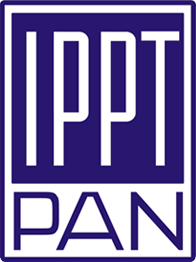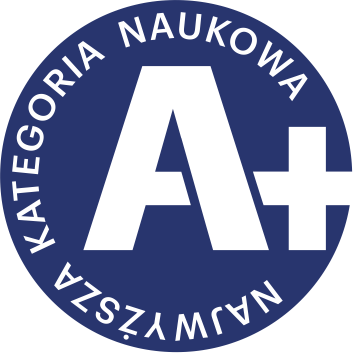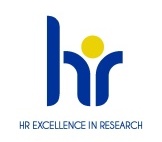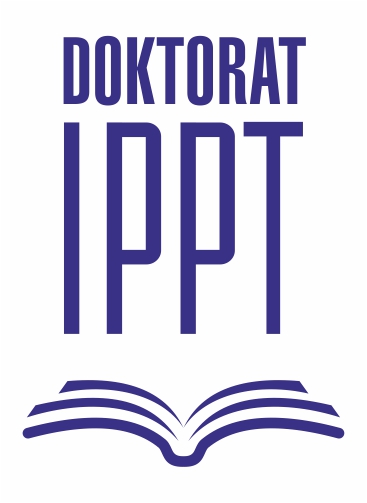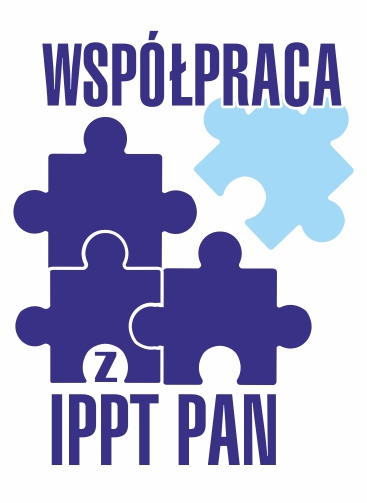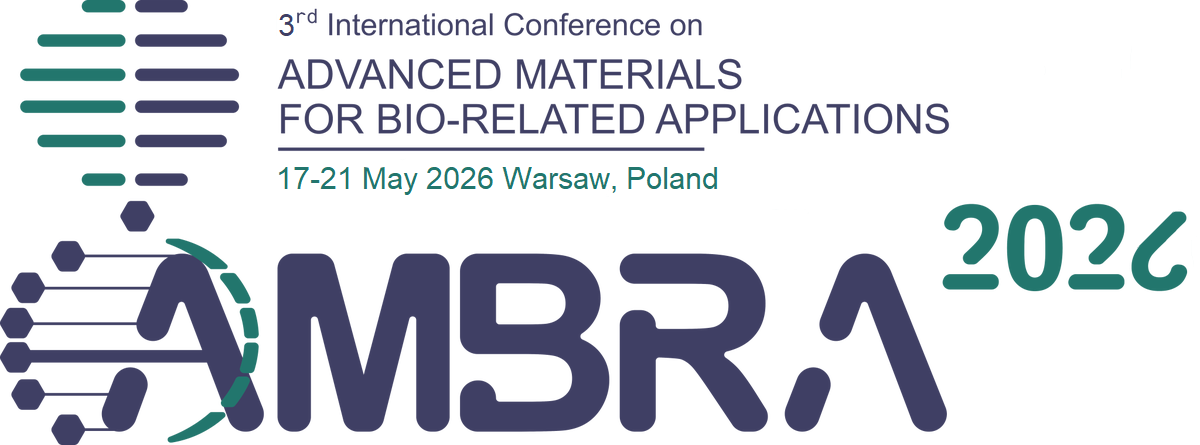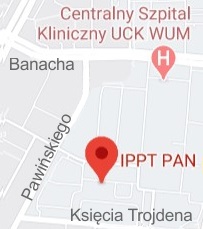| mgr inż. Kamil Opiela |

|
|
Ostatnie publikacje
| 1. |
Kowalczyk-Gajewska K., Maj M., Bieniek K., Majewski M., Opiela K.C., Zieliński T.G., Cubic elasticity of porous materials produced by additive manufacturing: experimental analyses, numerical and mean-field modelling,
ARCHIVES OF CIVIL AND MECHANICAL ENGINEERING, ISSN: 1644-9665, DOI: 10.1007/s43452-023-00843-z, Vol.24, pp.34-1-34-22, 2024 Streszczenie: Słowa kluczowe:
| 140p. | |||||||||||||||||||||||||||||||||||||||||||||||||||||||||||||||||||||||||
| 2. |
Zieliński T.G., Opiela K.C., Dauchez N.♦, Boutin T.♦, Galland M.-A.♦, Attenborough K.♦, Extremely tortuous sound absorbers with labyrinthine channels in non-porous and microporous solid skeletons,
APPLIED ACOUSTICS, ISSN: 0003-682X, DOI: 10.1016/j.apacoust.2023.109816, Vol.217, pp.109816-1-13, 2024 Streszczenie: Słowa kluczowe:
| 100p. | |||||||||||||||||||||||||||||||||||||||||||||||||||||||||||||||||||||||||
| 3. |
Opiela K.C., Zieliński T.G., Attenborough K.♦, Limitations on validating slitted sound absorber designs through budget additive manufacturing,
Materials & Design, ISSN: 0264-1275, DOI: 10.1016/j.matdes.2022.110703, Vol.218, pp.110703-1-17, 2022 Streszczenie: Słowa kluczowe:
| 140p. | |||||||||||||||||||||||||||||||||||||||||||||||||||||||||||||||||||||||||
| 4. |
Opiela K.C., Zieliński T.G., Dvorák T.♦, Kúdela Jr S.♦, Perforated closed-cell aluminium foam for acoustic absorption,
APPLIED ACOUSTICS, ISSN: 0003-682X, DOI: 10.1016/j.apacoust.2020.107706, Vol.174, pp.107706-1-17, 2021 Streszczenie: Słowa kluczowe:
| 100p. | |||||||||||||||||||||||||||||||||||||||||||||||||||||||||||||||||||||||||
| 5. |
Zieliński T.G., Opiela K.C., Pawłowski P., Dauchez N.♦, Boutin T.♦, Kennedy J.♦, Trimble D.♦, Rice H.♦, Van Damme B.♦, Hannema G.♦, Wróbel R.♦, Kim S.♦, Ghaffari Mosanenzadeh S.♦, Fang N.X.♦, Yang J.♦, Briere de La Hosseraye B.♦, Hornikx M.C.J.♦, Salze E.♦, Galland M.-A.♦, Boonen R.♦, Carvalho de Sousa A.♦, Deckers E.♦, Gaborit M.♦, Groby J.-P.♦, Reproducibility of sound-absorbing periodic porous materials using additive manufacturing technologies: round robin study,
Additive Manufacturing, ISSN: 2214-8604, DOI: 10.1016/j.addma.2020.101564, Vol.36, pp.101564-1-24, 2020 Streszczenie: Słowa kluczowe:
| 200p. | |||||||||||||||||||||||||||||||||||||||||||||||||||||||||||||||||||||||||
| 6. |
Opiela K.C., Zieliński T.G., Microstructural design, manufacturing and dual-scale modelling of an adaptable porous composite sound absorber,
COMPOSITES PART B-ENGINEERING, ISSN: 1359-8368, DOI: 10.1016/j.compositesb.2020.107833, Vol.187, pp.107833-1-13, 2020 Streszczenie: Słowa kluczowe:
| 200p. |
Prace konferencyjne
| 1. |
Opiela K.C., Dauchez N.♦, Boutin T.♦, Bécot F.-X.♦, Chevillotte F.♦, Venegas R.♦, Zieliński T.G., Comparison of double-porosity sound absorbers made of sintered or glued powder grains,
ISMA2024 / USD2024, 31st International Conference on Noise and Vibration Engineering / International Conference on
Uncertainty in Structural Dynamics, 2024-09-09/09-11, Leuven (BE), pp.337-346, 2024 Streszczenie:
| |||||||||||||||||||||||||
| 2. |
Opiela K.C., Zielinski T.G., Modifiable labyrinthine microstructure for adjustable sound absorption and insulation,
10th Convention of the European Acoustics Association - Forum Acusticum 2023, 2023-09-11/09-15, Torino (IT), DOI: 10.61782/fa.2023.0866, pp.2937-2942, 2023 Streszczenie: Słowa kluczowe:
| |||||||||||||||||||||||||
| 3. |
Zielinski T.G., Opiela K.C., Dauchez N.♦, Boutin T.♦, Galland M.-A.♦, Attenborough K.♦, Low frequency absorption by 3D printed materials having highly tortuous labyrinthine slits in impermeable or microporous skeletons,
10th Convention of the European Acoustics Association - Forum Acusticum 2023, 2023-09-11/09-15, Torino (IT), DOI: 10.61782/fa.2023.0342, pp.2275-2282, 2023 Streszczenie: Słowa kluczowe:
| |||||||||||||||||||||||||
| 4. |
Opiela K.C., Zieliński T.G., Attenborough K.♦, Predicting sound absorption in additively manufactured microporous labyrinthine structures,
ISMA2022 / USD2022, International Conference on Noise and Vibration Engineering / International Conference on Uncertainty in Structural Dynamics, 2022-09-12/09-14, Leuven (BE), pp.405-414, 2022 Streszczenie:
| 20p. | ||||||||||||||||||||||||
| 5. |
Opiela K.C., Zieliński T.G., Attenborough K.♦, Manufacturing, modeling, and experimental verification of slitted sound absorbers,
ISMA2020 / USD2020, International Conference on Noise and Vibration Engineering / International Conference on Uncertainty in Structural Dynamics, 2020-09-07/09-09, Leuven (BE), pp.409-420, 2020 Streszczenie:
| 20p. | ||||||||||||||||||||||||
| 6. |
Opiela K.C., Zieliński T.G., Dvorák T.♦, Kúdela Jr S.♦, Perforated closed-cell metal foam for acoustic applications,
e-FA2020, e-FORUM ACUSTICUM 2020, 2020-12-07/12-11, Lyon (FR), DOI: 10.48465/fa.2020.0925, pp.2879-2886, 2020 Streszczenie:
| |||||||||||||||||||||||||
| 7. |
Opiela K.C., Zieliński T.G., Adaptation of the equivalent-fluid model to the additively manufactured acoustic porous materials,
ICA 2019, 23rd International Congress on Acoustics integrating 4th EAA Euroregio 2019, 2019-09-09/09-13, Aachen (DE), DOI: 10.18154/RWTH-CONV-239799, pp.1216-1223, 2019 Streszczenie: Słowa kluczowe:
| |||||||||||||||||||||||||
| 8. |
Zieliński T.G., Opiela K.C., Pawłowski P., Dauchez N.♦, Boutin T.♦, Kennedy J.♦, Trimble D.♦, Rice H.♦, Differences in sound absorption of samples with periodic porosity produced using various Additive Manufacturing Technologies,
ICA 2019, 23rd International Congress on Acoustics integrating 4th EAA Euroregio 2019, 2019-09-09/09-13, Aachen (DE), DOI: 10.18154/RWTH-CONV-239456, pp.4505-4512, 2019 Streszczenie: Słowa kluczowe:
| |||||||||||||||||||||||||
| 9. |
Opiela K.C., Rak M.♦, Zieliński T.G., A concept demonstrator of adaptive sound absorber/insulator involving microstructure-based modelling and 3D-printing,
ISMA 2018 / USD 2018, International Conference on Noise and Vibration Engineering / International Conference on Uncertainty in Structural Dynamics, 2018-09-17/09-19, Leuven (BE), pp.1091-1103, 2018 Streszczenie:
| 20p. |
Abstrakty konferencyjne
| 1. | Opiela K.C., Zieliński T.G., Dźwiękochłonność na przykładzie materiałów porowatych wytwarzanych przyrostowo z cieczy lub proszku, OSA 2024, LXX Otwarte Seminarium z Akustyki, 2024-09-16/09-20, Pułtusk (PL), pp.1, 2024 | ||||||||||
| 2. | Kowalczyk-Gajewska K., Bieniek K., Maj M., Majewski M., Opiela K., Zieliński T.G., THE EFFECT OF INCLUSION SPATIAL DISTRIBUTION: MODELLING AND EXPERIMENTAL VALIDATION, CMM-SolMech 2022, 24th International Conference on Computer Methods in Mechanics; 42nd Solid Mechanics Conference, 2022-09-05/09-08, Świnoujście (PL), No.89, pp.14/89-14/89, 2022 | ||||||||||
| 3. |
Opiela K.C., Konowrocki R., Zieliński T.G., Magnetically controlled sound absorption by means of a composite additively manufactured material,
EACS 2022, 7th European Conference on Structural Control, 2022-07-10/07-13, Warszawa (PL), pp.153-154, 2022 Streszczenie:
| ||||||||||
| 4. |
Opiela K.C., Zieliński T.G., Predicting sound absorption in additively manufactured porous materials using multiscale simulations in FEniCS,
FEniCS 2021 Conference, 2021-03-22/03-26, Cambridge (GB), DOI: 10.6084/m9.figshare.14495349, pp.370, 2021 Słowa kluczowe:
| ||||||||||
| 5. |
Opiela K.C., Zieliński T.G., Attenborough K.♦, Impedance-tube characterisation of additively manufactured slitted sound absorbers,
SAPEM’2020+1, 6th (Triennial) Symposium on the Acoustics of Poro-Elastic Materials, 2021-03-29/04-02, Purdue University, West Lafayette, Indiana (US), pp.1-2, 2021 Streszczenie:
| ||||||||||
| 6. | Zieliński T.G., Opiela K.C., Multiscale and multiphysics modelling of an adaptive material for sound absorption, COMSOL CONFERENCE, 2018-10-22/10-24, Lausanne (CH), pp.1-2, 2018 | ||||||||||
| 7. | Zieliński T.G., Jankowski Ł., Opiela K.C., Deckers E.♦, Modelling of poroelastic media with localised mass inclusions, SAPEM'2017, SAPEM'2017 - 5th Symposium on the Acoustics of Poro-Elastic Materials, 2017-12-06/12-08, Le Mans (FR), pp.1-2, 2017 |
Patenty
|
Numer/data zgłoszenia patentowego Ogłoszenie o zgłoszeniu patentowym |
Twórcy Tytuł Kraj i Nazwa uprawnionego z patentu |
Numer patentu Ogłoszenie o udzieleniu patentu |
|
|---|---|---|---|
|
442254 2022-09-12 BUP 12/2024 2024-03-18 |
Konowrocki R., Zieliński T. G., Opiela K. Sposób adaptacyjnego pochłaniania dźwięku i izolacji akustycznej poprzez modyfikację mikrogeometrii warstwy porowatej PL, Instytut Podstawowych Problemów Techniki PAN |
247595 WUP 31/2025 2025-08-04 |
|
